[Great Western Vehicle] [Events] [Supporting the GWV]
[Pali & Buddhist Studies] [Tipitaka Index] [Buddhist Timeline] [Pali-English Dictionary] [Sanskrit & Vedic Studies] [Ecstatic Meditation Archive]
100 million years of Earth's expansion due to impact
Expanding Earth via Impact Hypothesis
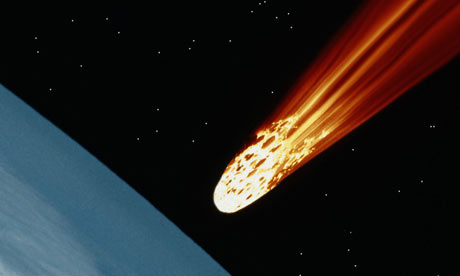
I originally thought the Expanding Earth Hypothesis was idiotic, but the Neal Adams animation has convinced me otherwise. However, the three expanding earth hypotheses are absurd.
The problem with the acceptance of the Expanding Earth Hypothesis, is it is hampered by the lack of a plausible mechanism, and the mechanisms postulated thus far require rewriting the laws of physics, which fails the Occam’s Razor test. Impact Theory is well established by Shoemaker, Alvarez et al. They have demonstrated that asteroid and cometary impacts have happened in the past with sufficient energy to cause extinction. A plausible and verifiable mechanism of action to explain the Expanding Earth Hypothesis is via Impact Hypotheses. Thus, the Expanding Earth theorists need to embrace impact theory. So, I propose a fourth hypothesis, which is the Expanding Earth via Impact Hypotheses.
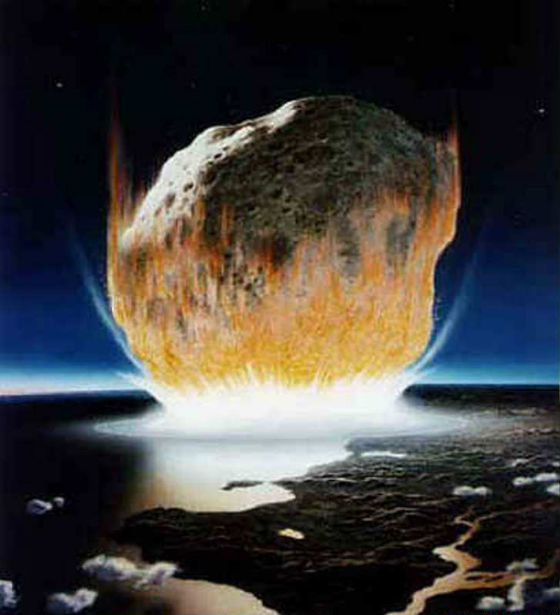
Impact Hypothesis
The Impact Hypothesis, as established by Shoemaker, Alvarez et al, is an impact event is the collision of an asteroid, comet, or other celestial object with another celestial object such as Earth. Throughout recorded history, hundreds of minor impact events (and exploding bolides) have been reported, with some occurrences causing deaths, injuries, property damage or other significant localized consequences.[1] There have also been major impact events throughout the Earth's history, which severely disrupted the environment and caused mass extinctions.
Impact craters are the result of impact events on solid objects and as the dominant landforms on many of the Solar System's solid objects and provide the most solid evidence of prehistoric events.
Earth has gone through periods of abrupt and catastrophic change, some due to the impact of large asteroids and comets on the planet. A few of these impacts may have caused massive climate change and the extinction of large numbers of plant and animal species.
Impact Caused Extinction Hypothesis
The Alvarez hypothesis posits that the mass extinction of the dinosaurs and many other living things was caused by the impact of a large asteroid on the Earth sixty-five million years ago, called the Cretaceous–Paleogene extinction event. There have been other extinctions, and they may have been caused by other impacts.
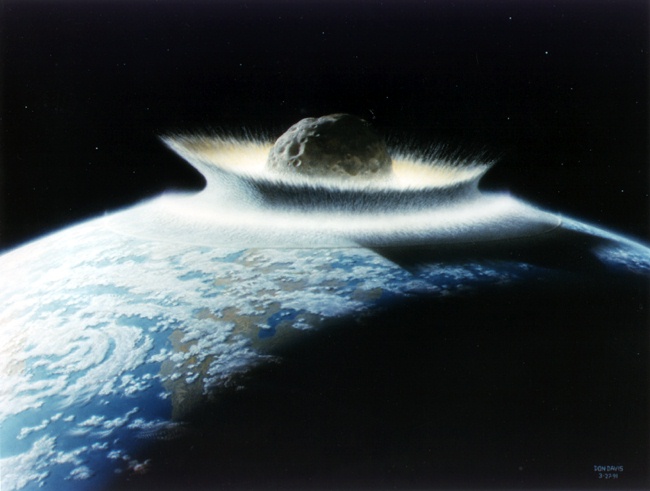
Expanding Earth via Impact Hypothesis
Thus, since Alvarez et al has demonstrated that asteroid and cometary impacts have happened in the past with sufficient energy to cause extinction; and those impacts with sufficient energy to cause extinction are caused by objects that are 10s of miles in diameter; and the Earth’s crust is roughly 25 miles thick. Shoemaker showed that an impact will produce a lens of crushed rock below the impacting body of significant depth. It is thus reasonable to say an asteroid with sufficient energy to cause extinction is at least 10-25 miles in diameter. An asteroid that is 10-25 miles in diameter is likely to penetrate the crust. Therefore it is likely that an impact with sufficient energy to cause extinction is likely to penetrate the crust.

Impacts that penetrate the crust will add volume to the internal volume of the Earth. As the internal volume of the Earth increases the crust must crack and expand to make room for the increasing volume of the Earth.
Thus, the Earth is expanding by external accretion due to meteorites, comets and dust. Some of those meteorites and comets are of sufficient impact energy to penetrate the curst and add to the internal volume of the Earth.
Impacts that add to the internal volume of the Earth will cause rifts on the surface of the Earth as the Earth’s crust expands to accommodate the new volume. Therefore rift valleys and ocean basins should be demonstrable proof of an impact.
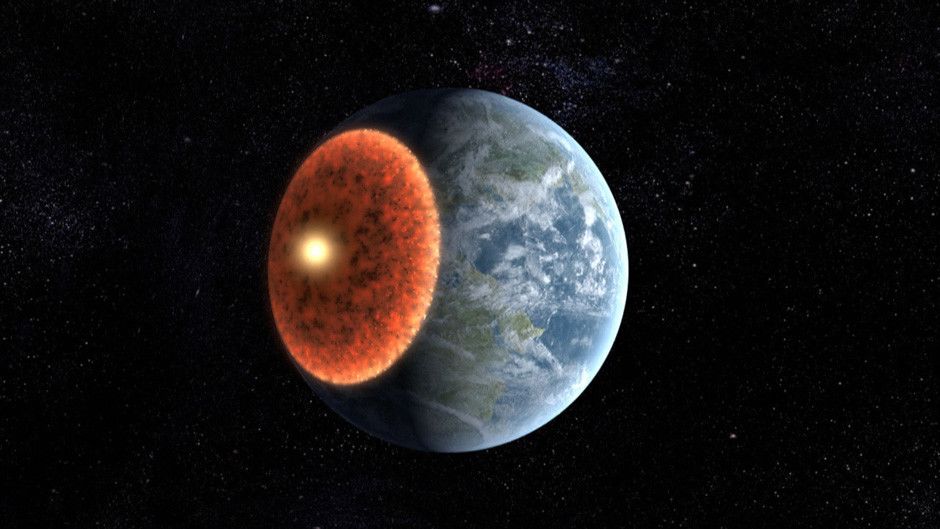
The reason why rifts and other evidence of crustal expansion are evident on other bodies in this solar system, such as the moon and Mars, is because they have also received impacts, and not because the gravitational constant has changed or the volume of those bodies is mysteriously expanding. They are expanding due to impacts.
Additionally, the rift volume should be proportional to the increase in volume of the impacted body. Thus we should be able to calculate the volume of the impacting body that caused a rift based upon the volume of the rift.
Iridium is the chemical element with atomic number 77, and is represented by the symbol Ir. It is a very hard, brittle, silvery-white transition metal of the platinum family, iridium is the second-densest element (after osmium) and is the most corrosion-resistant metal, even at temperatures as high as 2000 °C.
Iridium is found in meteorites with an abundance much higher than its average abundance in the Earth's crust. For this reason the unusually high abundance of iridium in the clay layer at the Cretaceous–Paleogene boundary gave rise to the Alvarez hypothesis that the impact of a massive extraterrestrial object caused the extinction of dinosaurs and many other species 65 million years ago.
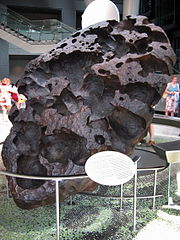
![]()
The Willamette Meteorite, the sixth-largest meteorite found in the world, has 4.7 ppm iridium.[36] Iridium is one of the least abundant elements in the Earth's crust, having an average mass fraction of 0.001 ppm in crustal rock. In contrast to its low abundance in crustal rock, iridium is relatively common in meteorites, with concentrations of 0.5 ppm or more.[37] Within the Earth's crust, iridium is found at highest concentrations in three types of geologic structure: igneous deposits (crustal intrusions from below), impact craters, and deposits reworked from one of the former structures.
In 1980, a team of researchers consisting of Nobel prize-winning physicist Luis Alvarez, his son, geologist Walter Alvarez, and chemists Frank Asaro and Helen Michels discovered that sedimentary layers found all over the world at the K–Pg boundary contain a concentration of iridium many times greater than normal (30 times background in Italy and 160 times at Stevns).[4] The evidence for the Alvarez impact theory is supported by chondritic meteorites and asteroids which have an iridium concentration of ~455 parts per billion,[6] much higher than ~0.3 parts per billion typical of the Earth's crust.[4]
Using estimates of the total amount of iridium in the K–Pg layer, and assuming that the asteroid contained the normal percentage of iridium found in chondrites, the Alvarez team went on to calculate the size of the asteroid. The answer was about 10 km (6.2 mi) in diameter
The problem with the Alvarez hypothesis is his estimate of the size of the asteroid was most probably based upon the most conservative estimate considering that impact theory was new, and his proposal that an impact was the cause of the Cretaceous–Paleogene extinction event. Thus, the impacting object could easily have been 10-5000 times larger, if the Iridium content was 10-5000 times less than Alvarez estimated. It is hard to imagine now that an object only 10 km (6.2 mi) in diameter would cause the Cretaceous–Paleogene extinction event.

If we accept the Expanding Earth via Impact Hypothesis, we will realize that the expansion causing impacts were much larger than here to for estimated. Otherwise, where does the growth come from? And, tossing out physics is not the way to do it. So, the mechanism of impact theory-caused expanding earth is, the asteroids were larger than believed, they penetrated the crust, and thus added to the internal volume of the earth, which causes the crust to crack and expand. Using the expanding Earth hypotheses we can then fairly accurately determine the volume gained by each of the large impact-driven extinctions.
Arguably with the expanding earth comes an increase in mass, which is accompanied by an increase in gravity, thus increased gravity could be a component of the cause of extinction; however, the cause of the expanding earth and increased gravity was impact.
This plausible and verifiable mechanism of action to explain the Expanding Earth is certainly more cogent and logically true than arguing that 2/3 of the Earth’s crust subducts at a significantly higher rate than 1/3 of the earths crust. If the ocean basins are only 10s of millions years old, then why are the continents 100s of millions to billions of years old? The Expanding Earth Theory explains that better than continental drift and subduction.
The Following videos provide an excellent demonstration of the expanding Earth


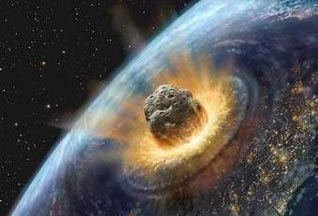


 2:23
2:23  2:00
2:00  2:19
2:19  2:03
2:03  1:00
1:00  1:56
1:56  2:04
2:04  4:36
4:36 
